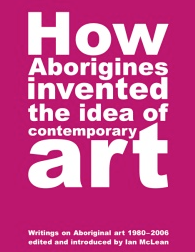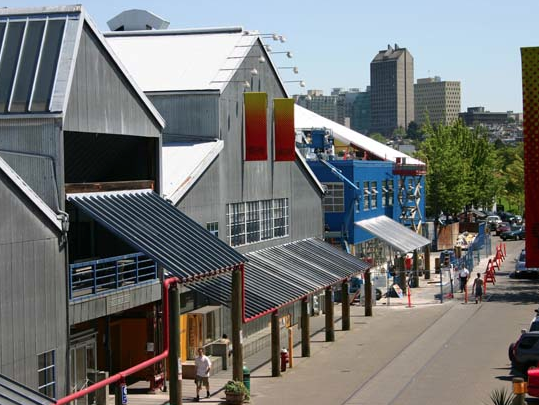I will weave through a series of juxtapositions in this blog entry drawn from a number of experiences which I have had in the "field" of ethnography and documentary film — a kind of bricolage — or as James Clifford has put it, an 'ethnographic surrealism'.(1)
In retrospect these fragments are linked in ways which I could not have anticipated before I made the attempt to understand the connections. This kind of reconstruction interests me because it is a combination of personal history, fieldwork and theoretical exploration, evidence of an effort to explore and map the relationships among subjectivity, analysis and experience.
The etymological origin of the term documentary is rooted in the notion of the lesson and is connected to docility, doctrine, indoctrination and didacticism. Docility suggests someone willing to be taught and also someone who is teachable. To be responsive, to be taught, to be open to the information which is presented — information which, if it is to function as document must reproduce in as great detail as possible the world being pictured.
Search a bit further into the etymology and the stronger connection is to doctrine and indoctrination which have roots not only in teaching but in notions of specialization — in the idea of a specialist able to instruct, someone whose knowledge cannot be questioned, the documentary filmmaker.
I bring up this tableau of origins because although a consensus has developed around the definition of "documentary" the debate at this stage pivots on questions of realism almost, though not completely, in opposition to questions of pedagogy. Documentaries however, exist as object lessons in themselves of a desire to teach and thus to enter into a system of communication (or to create one) which links images with specific outcomes or results. The instrumental logic of the documentary is so deeply ingrained that the technology of image creation is now geared to increasing the probability of specific effects upon the viewer.
I am speaking here about the hybridization of light-weight video, film and computers, a kind of postmodern brew designed to make the experience of viewing more immersive, hence more real.
Let me contrast the above with the work of Eric Michaels, a documentary/ethnographic imagemaker who worked in Australia with Aboriginal peoples. He died in 1988 but the impact of his undertaking will continue to be felt for a long time. His essays and his brilliant monograph entitled, *Aboriginal Invention of Television* (1986) reveal a sensibility closely tied to some radical innovations in documentary and ethnographic thought over the last decade. (2)
Michaels explored the frontiers of one of my major interests, the impact of video and television on indigenous cultures. He achieved this by rethinking the notion of "effects" — the ways in which Western cultures control and attempt to dominate other societies — and not positing anything like a linear model for what happens when new technologies are thrust upon indigenous peoples. Michaels worked on both sides of a complex process. He was aware of the need for indigenous peoples to take control of the media they were being exposed to. He was also very sensitive to the specific choices, which they made with respect to images. His approach interests me because he questioned the roots of instrumental thinking by looking at the way in which another culture responds to the logic of images — to modes of storytelling and representation.
His insights in this regard are very significant. In his essay on Hollywood iconography (Michaels 1988:119) Michaels points out many of the radical differences in understanding, which the Aboriginal group, the Wapiri have with regards to American films and television. Not only are the plots dealt with differently, but the characters in these films are reinterpreted according to the specific exigencies of Walpiri culture and social life.
All of this is of course a way of questioning the role of documentary images precisely as devices of teaching and learning that may have cross-cultural value. It is also about how to analyse the strategic choices, which different cultures make in response to the influences, which they have on each other. The question of vantage point — where and how these choices can be examined was a central concern of Michaels. He tried to draw upon the experiences of non-print media and apply them to the process through which ethnographic knowledge is transferred and transformed into visual and oral documents. He noted the specificity of Aboriginal approaches to images and celebrated the differences in how they interpreted documentary claims of truth and realism.
This is made very clear in his article entitled, "How to Look at Us Looking at the Yanomami Looking at Us," (3) in which he says: "A solution is to address the entire process of visual media as a problem of communication, more specifically in cross-cultural translation." (Michaels 1982:145)
It may be that nothing of value to indigenous cultures can be yielded in the process of translation and that the role of visual media is more important for Western cultures than for colonised ones. But this would presume, as Michaels so often pointed out, that colonised cultures themselves have somehow escaped the influences of modern media, which as anyone who has been watching the growth and development of video for example, knows is not the case.
This still doesn't lessen one of the central dilemmas of ethnographic and documentary work with film and video. For the ethnographer it may be more important to uncover both the applicability and effects of the technology than to let the technology work its way through the society in question and let that society find the measure of its own response.
I think that it would not be too radical an assertion to say that the response of indigenous cultures to cultural phenomena cannot be ascertained clearly until those cultures have devised strategies of response, whatever form those responses might take.
Working its way through — what do I mean? A process perhaps which may not be open to external examination and without wanting to push the point too far, a process which may produce forms of internal and culturally specific images which cannot be judged, evaluated or examined from the outside. I want to be careful here because I am not suggesting that a vantage point couldn't be found which might permit one culture to examine another, but there is the matter, and I consider it to be an important one, of how we go about understanding our own history with respect to modern media, let alone the history of other cultures.
There is a tendency, manifest in many ethnographic and documentary projects but even more so when film and video are put to use, to presume that what other cultures choose as images can actually be translated, and it is this presumption which I think needs to be contested because what is inevitably involved are complex sign systems which our own culture has had difficulty in interpreting for itself let alone for others.
This is a fascinating and perplexing problem. It suggests a kind of opaqueness, which the universalizing tendencies of modern film and television production have not grappled with. We need to celebrate the complex and rather 'different' images, which the Aboriginal peoples of Australia have produced, and which Eric Michaels documented. (3)
(1) See Chapter Four of *The Predicament of Culture* (1988) in which Clifford argues for a redefinition of the history of surrealism in order to show the close if not parallel development of ethnography and surrealist thinking.
(2) I am thinking of the work of Edmund Carpenter (1970); James Clifford (1988); Jean Comaroff (1985); Vincent Crapazano (1980); Michel De Certeau (1984); Johannes Fabian (1983); Clifford Geertz (1988); George Marcus and Michael Fischer (1986); Paul Rabinow (1977).
(3) Eric Michaels (1982). This is an essay in a superb collection edited by Jay Ruby, entitled, A Crack in the Mirror (1982).
 Saturday, July 3, 2010 at 5:32PM
Saturday, July 3, 2010 at 5:32PM  Emily Carr University of Art + Design
Emily Carr University of Art + Design Art,
Art,  Creativity in
Creativity in  Creativity
Creativity 


